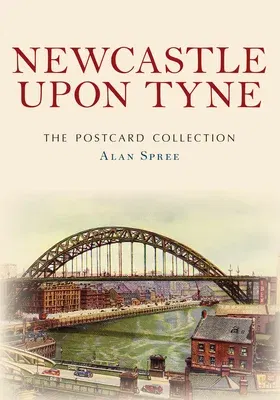Newcastle upon Tyne has long been an important city in the north-east of
England. A fortress against Scotland, medieval Newcastle grew rich
exporting coal, wool and other goods from its port on the River Tyne, as
well as being a shipbuilding centre. New industries developed in later
centuries and Newcastle's population grew, and by the eighteenth century
the town walls and gates were demolished to allow further expansion and
easy movement of trade into the city. At the same time the city gained
its first newspaper, infirmary, bank, dispensary, assembly rooms and
theatre and a new bridge was built across the Tyne. The centre of the
city was rebuilt in 1825-40 and gradually amenities improved for the
average inhabitant. In the 1920s and 1930s, the first council houses
were built in Newcastle. The city suffered some damage during the Second
World War but later decades have witnessed urban regeneration. In
Newcastle upon Tyne: The Postcard Collection the author has drawn on a
remarkable selection of old postcards to give a pictorial record of life
in the city's rich past, from the mid-nineteenth century to the 1940s.
Although some of historical Newcastle seen in these views has been lost,
many landmarks have remained and will be familiar today. The postcards
show the changes to Newcastle's fabric and its community adapting over
the course of this period. This fascinating collection of images will be
of interest to those who have lived in Newcastle or know it well.

